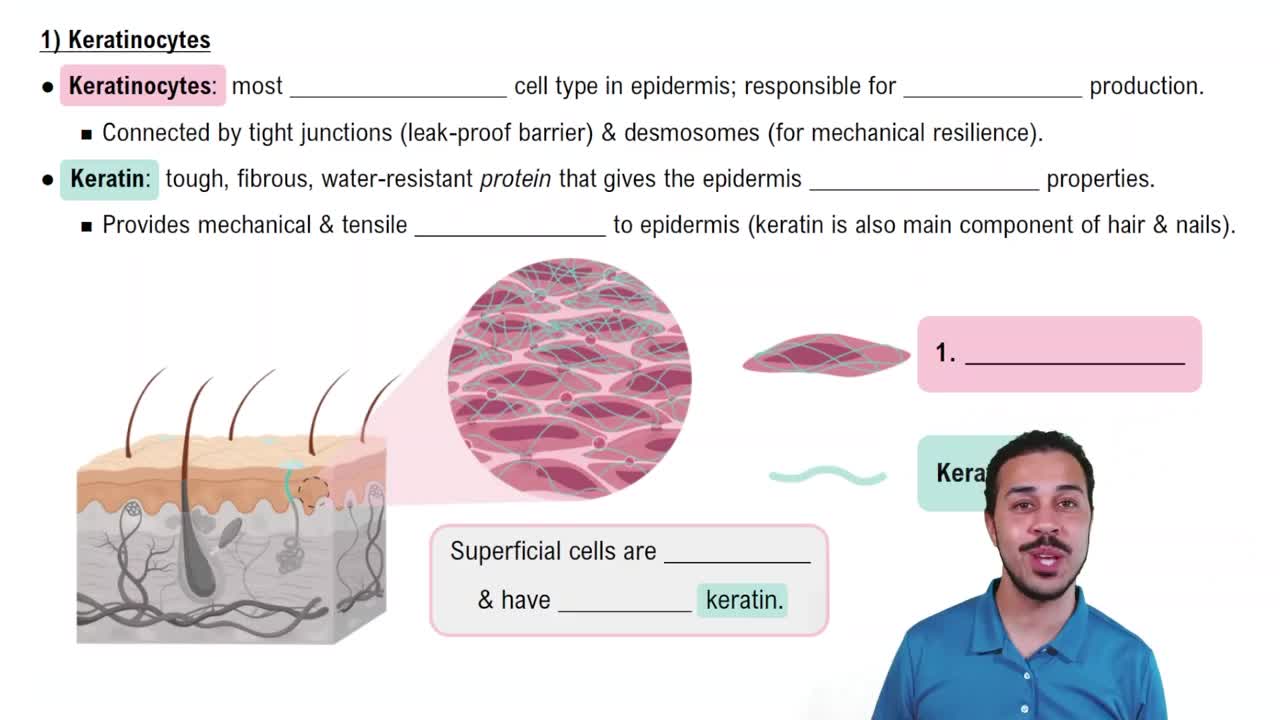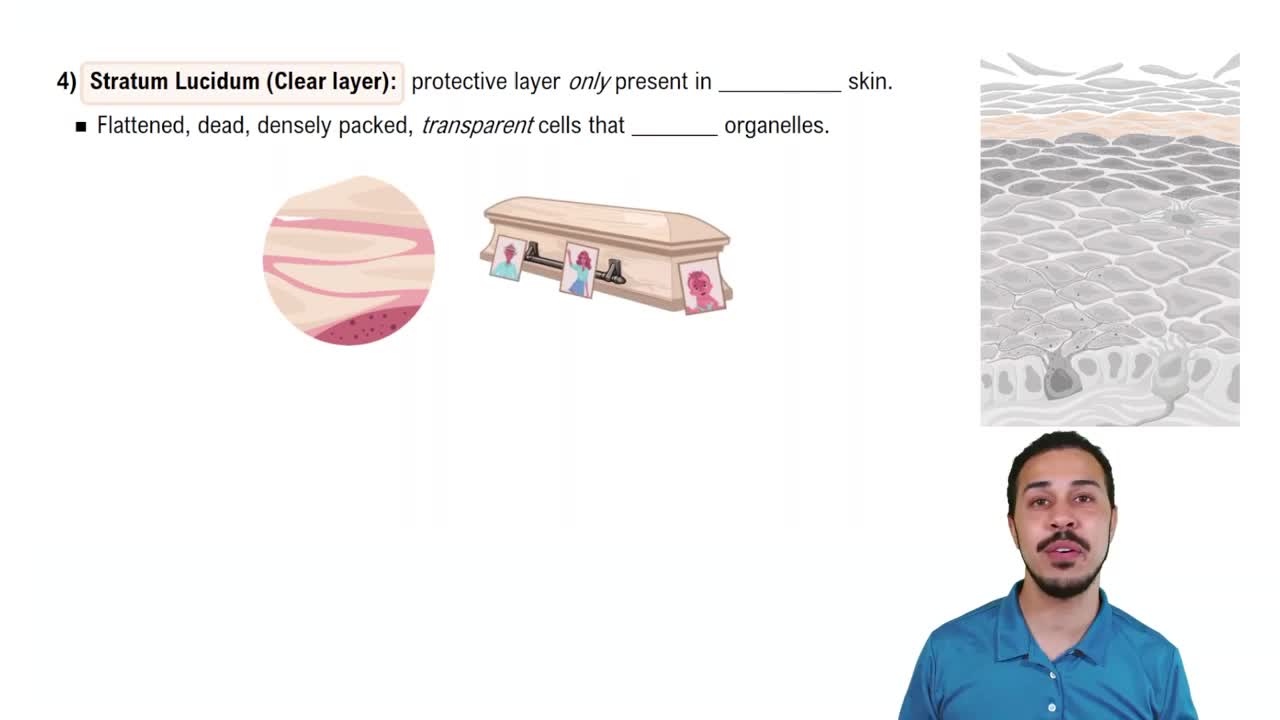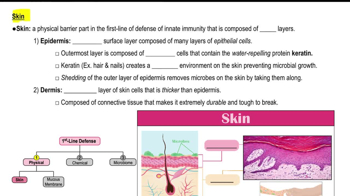Here are the essential concepts you must grasp in order to answer the question correctly.
Keratinocyte Lifecycle
Keratinocytes are the primary cell type found in the epidermis, the outermost layer of the skin. They originate in the stratum basale, the deepest layer of the epidermis, and undergo a process of differentiation as they move upward through the layers of the skin, eventually reaching the stratum corneum, where they are shed. This lifecycle is crucial for maintaining skin integrity and barrier function.
Recommended video:
Epidermal Layers
The epidermis consists of several layers, each with distinct functions. The stratum basale is the bottom layer where new keratinocytes are generated, while the stratum corneum is the outermost layer composed of dead, flattened keratinocytes that provide a protective barrier. Understanding these layers is essential for comprehending skin biology and the process of skin renewal.
Recommended video:
Epidermal Layers: Stratum Lucidum (Clear Layer)
Skin Barrier Function
The skin barrier function is primarily provided by the stratum corneum, which prevents water loss and protects against environmental damage. As keratinocytes move from the stratum basale to the stratum corneum, they undergo keratinization, a process that enhances the barrier's effectiveness. This function is vital for overall skin health and homeostasis.
Recommended video:
 Verified step by step guidance
Verified step by step guidance Verified Solution
Verified Solution



 0:48m
0:48m